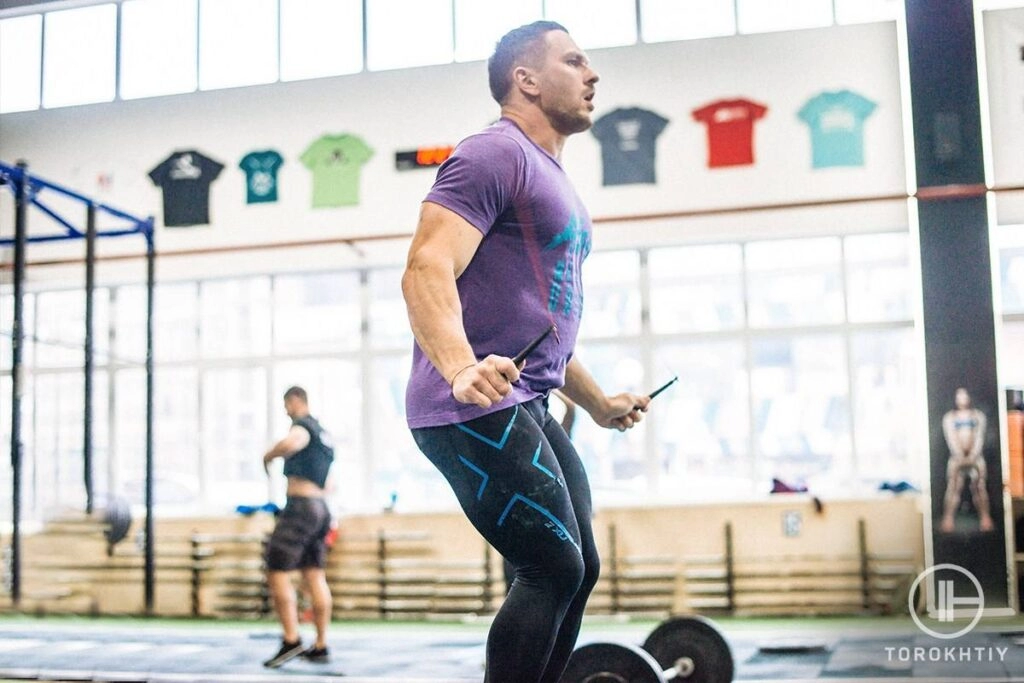What Is the Pelvic Floor and Why Does It Matter
Understanding pelvic floor muscles is key to appreciating their role in overall health and fitness. The pelvic floor is a group of muscles stretching like a hammock from the pubic bone at the front to the tailbone at the back. These muscles support the bladder, uterus (in women), prostate (in men), and bowel, helping maintain proper organ function and positioning.
Anatomy and Function of the Pelvic Floor Muscles
The pelvic floor muscles are made up of layers that provide strength, support, and control. They contract and relax to:
- Control continence by managing the release of urine and stool
- Stabilize the pelvis and spine, contributing to core stability
- Play a role in sexual function and childbirth recovery
These muscles work closely with abdominal, back, and hip muscles to create a solid core foundation. This foundation is essential not only for movement but for maintaining posture and preventing injury.
Importance in Core Stability Continence and Overall Health
A strong pelvic floor supports continence—preventing unwanted leakage—and enhances core strength that protects the lower back. Conversely, weak pelvic floor muscles can contribute to:
- Urinary or fecal incontinence
- Pelvic organ prolapse
- Lower back pain
- Reduced quality of life, especially postpartum or with aging
That is why pelvic floor health and fitness should be prioritized alongside other workout routines. Exercises targeting these muscles help maintain tone, endurance, and control. When combined with safe cardio activities such as jumping rope, you can support pelvic floor strength as part of overall fitness.
At PVCJumpRope.com, we believe in promoting exercise options that support full-body health, including the pelvic floor, making sure you stay safe and strong in your fitness journey.
How Jumping Rope Works Your Muscles and Pelvic Floor

Jumping rope is a full-body workout that goes beyond just your arms and legs. It activates multiple muscle groups and involves movement patterns that also engage the core and pelvic floor muscles—though often indirectly.
Muscle Groups Engaged During Jump Rope Exercises
- Legs and Lower Body: Your calves, quads, hamstrings, and glutes work hard to generate the bounce and absorb landing forces. These muscles provide stability and power with every jump.
- Core Muscles: To maintain balance and posture, your abs and lower back muscles stay active throughout the session. This core engagement helps support your pelvic floor by keeping the trunk stable.
- Arm and Shoulder Muscles: The forearms, shoulders, and wrists control the rope’s rotation, requiring endurance and coordination.
- Pelvic Floor Muscles: While not directly targeted, the pelvic floor contracts subtly to support organs against the impact and help with balance, especially during high-impact movements.
Types of Movements Impact and Core Activation
- Impact and Bounce: Each jump involves a controlled impact when your feet hit the ground. This repetitive force challenges your muscles to absorb shock and stabilize your body. The pelvic floor contributes by acting as a support base against these impacts.
- Jump Height and Landing: The way you jump and land influences muscle activation. Lower, softer jumps minimize pelvic floor strain, while higher jumps increase impact but also provide greater muscle engagement overall.
- Rope Speed and Rhythm: Faster rope rotations require quicker, more explosive movements, demanding stronger core and leg muscle activation. This can boost endurance in stabilizing muscles, including those around your pelvic area.
Understanding how these muscle groups work together during jump rope sessions helps appreciate the potential benefits for core strength and pelvis support — key factors in pelvic floor health and fitness.
For those interested in a safe and effective jump rope workout, tools like the PVC Plastic Jump Rope offer good quality and durable options to maintain proper technique and reduce injury risk.
Does Jumping Rope Strengthen the Pelvic Floor The Evidence
When it comes to pelvic floor strength and exercise, the impact of jumping rope isn’t straightforward. Scientific research on whether jumping rope directly strengthens the pelvic floor is limited. Most experts agree that high-impact activities like jumping can affect the pelvic floor muscles, but they don’t specifically target or isolate these muscles in the way traditional pelvic floor exercises do.
How Jumping Rope Engages Pelvic Floor Muscles
Jumping rope primarily works on core stability and lower body muscles. The pelvic floor is part of your core, so it gets indirectly engaged through the need to support your trunk and stabilize your pelvis during jumps. This core activation can help improve pelvic floor tone and endurance to some degree, especially when performed with good form.
Potential Benefits for Pelvic Floor Tone and Endurance
- Improved core strength supports the pelvic floor muscles.
- Impact from jumping helps promote muscle responsiveness and tone.
- Adds low to moderate challenge for pelvic floor endurance during movement.
Limitations of Jump Rope as a Pelvic Floor Exercise
- Jumping rope is not a targeted pelvic floor workout like Kegel exercises.
- High-impact movements may be too intense for those with weak pelvic floors or existing pelvic floor dysfunction.
- It doesn’t isolate pelvic floor muscles enough to significantly increase their strength or control.
In short, while jumping rope can be a good part of overall fitness and core muscle engagement, it shouldn’t replace specific pelvic floor exercises for anyone looking to actively strengthen those muscles. For lasting pelvic floor health, jump rope workouts should be combined with targeted pelvic floor exercises and possibly low-impact cardio depending on individual needs.
Potential Risks of Jumping Rope on Pelvic Floor Health
Jumping rope is a great workout, but it’s important to know it’s a high-impact activity that can affect the pelvic floor, especially for certain groups of people.
Who Is Most at Risk
- Women postpartum: After giving birth, pelvic floor muscles can be weaker and more vulnerable. High-impact moves like jumping rope might put extra pressure on those muscles before they fully recover.
- People with pelvic floor dysfunction: If you already have issues like pelvic organ prolapse, incontinence, or pelvic pain, jumping rope may worsen symptoms.
- Those with weak pelvic floor strength: Without sufficient muscle tone, the repetitive impact can lead to pelvic stress.
Warning Signs Jumping Rope Might Be Hurting Your Pelvic Floor
Watch out for symptoms that signal you should pause or modify your jump rope workouts. These include:
- Urine leakage during or after exercise
- Feeling heaviness or pressure in the pelvic area
- Increased pelvic or lower back pain
- Noticing a bulge or sensation of prolapse
If you experience any of these, it’s a clear sign jumping rope might not be the best fit for your pelvic floor health right now.
Recommendations for Jump Rope and Pelvic Floor Care
- Consult a pelvic floor specialist before starting jump rope if you’re postpartum, have pelvic floor issues, or are unsure about your pelvic strength.
- Start slow and focus on technique: Avoid high jumps and use soft landings to reduce impact.
- Incorporate pelvic floor exercises (like kegels) alongside jump rope workouts to build support.
- Consider lower impact cardio options if jumping rope causes discomfort or symptoms worsen.
Knowing these risks helps you enjoy jump rope while protecting your pelvic floor and overall health.
How to Make Jumping Rope Pelvic Floor Friendly
Jumping rope is a great workout, but if you want to protect your pelvic floor, you need to be smart about how you do it. Here are key tips to reduce pelvic stress and make your jump rope routine safer and more effective for pelvic floor health.
Proper Jump Rope Technique for Pelvic Floor Health
- Choose the right footwear: Wear supportive shoes with good cushioning to absorb impact and reduce strain on your pelvic floor.
- Use a soft surface: Jump on surfaces like a rubber mat, wooden floor, or grass. Avoid hard concrete or asphalt as these increase impact forces.
- Keep jumps low: Aim for a small bounce, just enough to clear the rope. High jumps increase impact and put extra pressure on the pelvic floor muscles.
- Land softly: Focus on landing with a bent knee and using the balls of your feet to absorb shock, which helps protect pelvic floor muscles.
Incorporate Pelvic Floor Strengthening Exercises
Jumping rope alone doesn’t fully target the pelvic floor, so it’s important to add specific pelvic floor exercises to your routine:
- Kegels: Regularly practice Kegel exercises to strengthen your pelvic floor muscles and improve tone and endurance.
- Core exercises: Include Pilates or bridges to improve core stability, which supports the pelvic floor during dynamic movements like jumping.
- Balance training: Exercises that enhance balance and control can improve how your pelvic floor works during high-impact activities.
Warm-up and Cool-down Tips for Pelvic Floor Health
- Warm-up gently: Start with low-impact movements like walking or marching in place to prepare your pelvic floor and surrounding muscles.
- Practice breathing techniques: Deep diaphragmatic breathing during warm-up and cool-down supports pelvic floor relaxation and control.
- Include stretches: Light stretches targeting your hips, lower back, and inner thighs help release tension and improve muscle flexibility.
- Cool down with pelvic floor focus: After your jump rope session, spend a few minutes on gentle pelvic floor contractions and relaxations to reduce muscle fatigue.
By following these jump rope pelvic floor-friendly tips, you can enjoy cardiovascular benefits while protecting and supporting your pelvic floor muscles. This balanced approach is especially important for postpartum women, those with pelvic floor concerns, or anyone looking to keep their pelvic health strong while staying active.
Best Practices for Combining Jump Rope Workouts with Pelvic Floor Care
Jump rope is a fantastic way to boost cardio and engage your core, but when it comes to pelvic floor health and fitness, combining jump rope with targeted pelvic floor exercises is key to a balanced routine. Here’s how to get the most from your jump rope workouts without risking pelvic floor strain.
Include Pelvic Floor Focused Exercises
To support pelvic floor strength while jumping rope, add these into your cross-training routine:
- Kegels: The classic go-to for pelvic floor activation and endurance. Perform them regularly to improve muscle tone.
- Pilates: Pilates moves strengthen your core and pelvic floor simultaneously, helping with coordination and stability during jump rope.
- Bridges and Squats: These lower-body exercises help build pelvic floor muscle strength and support overall stability.
Incorporating these alongside your jump rope workouts ensures that you’re not just relying on impact to build pelvic floor strength, but actively training those muscles.
Use Jump Ropes That Support Safe Pelvic Floor Workouts
At PVCJumpRope.com, our jump ropes are designed with your safety and form in mind. Here’s how the right jump rope can support pelvic floor health:
- Lightweight and Smooth Rotation: Minimizes unnecessary impact, reducing pelvic floor strain.
- Adjustable Lengths: Ensures proper posture and jumping form, which are important to avoid excess pressure on pelvic muscles.
- Quality Grip Handles: Promote better control, making it easier to land softly and protect your pelvic floor.
Tips for a Safe and Effective Jump Rope Routine
- Warm-Up: Always prep your body with stretches or light pelvic floor activation exercises.
- Focus on Form: Land softly on the balls of your feet to reduce impact.
- Moderate Jump Height: Avoid high jumps that increase pressure on your pelvis.
- Combine with Core Workouts: Strengthening your deep core muscles supports pelvic floor function during jumping and other activities.
By mixing jump rope cardio with essential pelvic floor exercises and using quality gear from PVCJumpRope.com, you can create a workout routine that’s both effective and safe for maintaining pelvic floor strength and endurance.
Alternative Pelvic Floor Exercises to Boost Strength and Support
Jumping rope can be a fun way to get your heart pumping and work your core, but when it comes to pelvic floor strength and exercise, there are other targeted moves that really make a difference. These exercises focus specifically on the pelvic floor muscles, helping improve tone, endurance, and overall pelvic health.
Recommended Pelvic Floor Strengthening Exercises
-
Kegel Exercises
The go-to pelvic floor workout, Kegels involve contracting and relaxing the pelvic muscles. They’re simple, effective, and can be done anywhere. Regular practice improves bladder control and supports pelvic organs.
-
Bridges
Lie on your back with knees bent and feet flat on the floor. Lift your hips slowly while squeezing your pelvic floor and glutes. Bridges strengthen the pelvic muscles and the lower back, which contributes to better core stability.
-
Squats
Properly done squats engage the pelvic floor along with your legs and core. Focus on maintaining pelvic alignment and tightening your pelvic muscles as you lower down. Squats also support hip strength and improve posture.
-
Pelvic Tilts
These gentle movements help increase awareness and control of your pelvic region. Lying on your back or standing, tilt your pelvis forward and backward, engaging your core and pelvic floor muscles.
When to See a Pelvic Floor Specialist
If you notice persistent symptoms like pelvic pain, urinary leakage when jumping rope or other activities, heaviness, or signs of pelvic organ prolapse, it’s time to get professional advice. A pelvic floor therapist or specialist can assess your muscle strength, identify dysfunction, and tailor a workout plan that fits your needs. They can also guide when and how to safely include jumping rope or other exercises, ensuring your routine supports rather than strains your pelvic floor.
Key Takeaway
For optimal pelvic floor health, combine low-impact strengthening exercises like Kegels, bridges, and squats with your jump rope workouts. And always listen to your body—if in doubt, consulting a specialist makes a huge difference.



